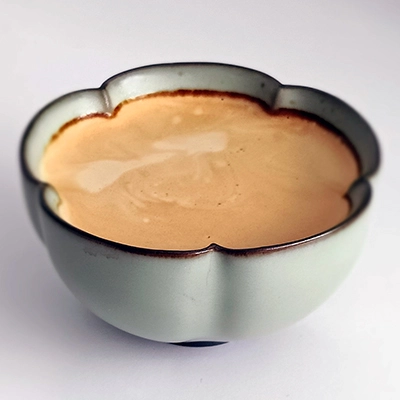I’m really furious at this. I bought a bunch in the past two years as that’s my go-to brands for my backup solutions. And in the past week, had to buy different brands to diversify.
My main takeaway:
Don’t buy SanDisk. Don’t buy Western Digital.
I don’t care if it’s only a few models. I’m not risking my data.
Every drive in my computer: NVME, SSD, and HDD is a WD drive. 🫣
So far these issues only apply to these specific SSDs … fingers crossed it stays that way, because like you I’ve got a number of WD HDDs in my life.
WD got in trouble not too long ago for deceptively marketing shingled drives as conventional. Back to back issues like this is going to leave a lasting impression on the kinds of people who buy drives.
I agree, I don’t buy WD drives any more. But I don’t want to replace the ones I already have unless it’s necessary.
“so far” is the operative word.
You really don’t want to discover you’re suddenly part of the 2024 list of drives that also are corrupt.
I think the key thing here is that older drives you already own are probably ok. At least if they’re a year old or so.
And frankly, your data should never be in question. Short of a drive failure where the whole drive dies, which would require data recovery services, your data should be safely stored. IMO that’s the premise of data storage; and bluntly, it’s the only job it has… To store, keep, and retrieve data when asked.
If it cannot do that, or has any nontrivial risk of being unable to do that, then it’s not worth the plastics that make up the case. Unless you’re using the drive as a temp/scrub/whatever disk, it’s unusable in my opinion.
So what did you end up buying and was that just random choice or based on some research/experience?
Samsung, bit more pricey but both my ssd and ram are both Samsung chips and I haven’t had a single problem with either.
E. Seems that further down the thread someone is saying Samsung is having issues too, which is dissapointing as I’ve always trusted Samsung.
Samsung has been hit or miss. For example EVO 840 were a mess a few years ago, had two of them, both slowed to a crawl (Firmware issue, Samsung never managed to fix it).
It’s all a mess :-/
Ye definitely hit or miss, they’ve been excellent for me. I got the 970 EVO last year or the year before and it’s been rock solid, my RAM is also Samsung chips albeit B die so higher bin which probably explains why I’ve never had a single issue with them in 4 odd years.
Hmmmm
My main NVMe is a 1TB Sandisk Extreme and it’s been doing so well for me for almost five years now.
Perhaps I make more frequent backups.
This is the best summary I could come up with:
In May, Ars Technica reported about customer complaints that claimed SanDisk Extreme SSDs were abruptly wiping data and becoming unmountable.
Ian Sloss, one of the lawyers representing Matthew Perrin and Brian Bayerl in a complaint filed yesterday, told Ars he doesn’t believe class-action certification will be a major barrier in a case “where there is a common defect in the firmware that is consistent in all devices.”
Perrin and Bayerl’s complaint mentions the 2TB Extreme, which Western Digital hasn’t officially confirmed as an affected device.
Jafri’s complaint says he bought an Extreme Pro (capacity not specified) because he was on an extended van trip and needed storage for drone footage, photos, and travel mementos.
The cases seek restitution, including damages, and for Western Digital to stop selling the affected drives until they’re fixed or the problems are fully disclosed on all labels, packaging, and advertising.
Sloss told Ars that challenges of the case might include establishing how frequently drives failed after Western Digital shared its May firmware update.
The original article contains 771 words, the summary contains 168 words. Saved 78%. I’m a bot and I’m open source!
Back in the day, working with WD was a nightmare. The spinning HDs never came with a keyed IDE cable. It must have saved them $.0001 per HD shipped. If you accidentally put the cable in backwards, it not only burned out the logic board on the WD HD, it would also burn out any other drives on the cable. And the IDE controller on the motherboard. Now it is easy to remember how to do it right. Install the power cable and then make sure the red wire on the power cable was next to the red wire (pin 1) on the IDE cable. But if you rush or make an assumption, that was an expensive mistake.
Wow. That’s such a ridiculous oversight.
This sounds like maybe early 90’s possibly without voltage regulators at the molex connector. I’ve been doing this a very long time and have never heard of this.
I’ve serviced computers where the ide cable key was hand-striped or with some other marking with a marker as opposed to the line (spoon’s red wire) already keyed from factory, somewhere mid 90’s. regular procedure at that shop i think at that time to mark any unkeyed cable found. not that i ever had to mark any single one, so even then they were really old ide cables.
Actually…i kind or remember a motherboard coming up in smoke from one of those when someone made a mistake. brand new first week technician i think.
Me with 2 WD HDDs and 2 Sandisk SD card: this is fine
The complaints are only about a specific line of external ssds. You’re fine.
The complaints are about this specific line, but reflect poorly on the business decisions going into that line, which in turn makes it hard to trust those same managers not to make anti-consumer choices in the future. I’m not going to take my WD/Sandisk drives out of use early, but I’m probably done buying new ones from them.
Excellent. I love my 1TB internal extreme :c
Just a reminder of the 3-2-1 backup model.
Semi important things are backed up to my home server. Super important stuff is also stored on a big name cloud service.
Also, don’t forget paper exists. For smaller documents, it could be worth printing them, and putting them in a water/fire resistant safe.
Also, don’t forget paper exists. For smaller documents, it could be worth printing them, and putting them in a water/fire resistant safe.
Before paper, and somewhere in-between the digital and analogue, maybe go weird with discs or magnetic tape drives (if you’re really into your electromagnetic data storage)?
And for the sillier side to this: don’t forget to laser etch the most important records in stone. Don’t think it’s worth the trouble? Wouldn’t have some of our ancient records if they weren’t literally carved in stone, so…Incidentally, would anyone happen to know of any personal robotic stone engraving tools one could get?
Would be fun to pass in some text and let a machine go to work on some stray stones.
Serious question:
How do you guys handle backups and how often do you do it?
I know I’m not doing particularly well. Once in a blue moon I’ll copy over files from my main drive onto my secondary drive. But I’m not doing anything fancy - literally copy the Documents and a few other folders and that’s it. I’m not compressing anything. I’m still keeping that secondary drive connected to my PC so if I got a virus, all that data could be infected. I also store some files on my Gdrive and OneDrive but those have long since filled up and I rarely bother to go through them to delete what I didn’t need anymore.
I feel whatever backup tools Windows has built in are probably worthless, but then again, I could be totally wrong on that.
Curious how real people handle this.
You are on a trip to disaster. Trust me, I do this for a living. One day you’re going to have a horrible surprise. I once had a guy get fired right there on a support call with me, he lost years worth of data because he wasn’t following good archival processes.
For consumer stuff:
- Buy a cheap NAS, plenty out there. Even one with just two drives is better than nothing (that’s what I do). Splurge and get one that does RAID-5, you’ll thank me one day. By the way, I’ve used WD stuff for a long time, and it’s been the most reliable in my experience even though their customer service is a shit show to deal with. 1a. A cheaper, but less effective option, just buy two drives and see if your BIOS supports RAID (most modern motherboards do). If not, well you can do it in you OS too, but hardware RAID is always better.
- Subscribe to a service like Google Drive, or One Drive, or Dropbox, or whatever you prefer. If you’re uncomfortable about putting stuff in the cloud then encrypt it first (VeraCrypt, GPG4Win, Password protected ZIP files even).
If you are running a business, definitely go with a good NAS, AND buy a tape library and get into a routine of rotating out the tapes and storing them off site (tapes are no use to you if your building get broken into, or burns down). And, use cloud storage too.
Just a point of clarification: Don’t use RAID 5 for more than 2-4 TB. The rebuild takes so long that the mean-time-between read errors statistic basically guarantees a read error while rebuilding, which may cause the controller to trash the array.
That and rebuilding that much data might push one of the drives over the edge anyway.
UNRAID for larger amounts?
Use a service like backblaze
Checked it out and (at least on mobile), you can’t even see what the pricing is like. Seems aimed more at businesses as well.
They do offer personal back up. Can do it fully encrypted too. Price used to be $6/month… is now $9/month, but if you prepay for 12 months then they tend to cut you more of a deal.
Can complain about the price, but the fact is hard drives also cost money and you basically never have to worry about losing your stuff. Even if you have hard drives, it could all be wiped out in a fire. Cloud has its advantages.
My Internet is fast enough where I think cloud storage would be reasonable.
Basically, you run their program and it automatically backs up any new changes on your machine
I’m a pro photographer and Backblaze has saved my butt multiple times.
I have a rack in my garage, all my servers and my gaming rig are in it - fiber cables run through my attic to my office to connect the front end of my gaming rig (monitor and usb c hub with peripherals).
My domain and all of my services are either VM’s on vmware or xcp-ng, or dockers on a VM. It’s all VM’s, except for the gaming rig and the Veeam backup server - they are bare metal.
VMware VM’s are backed up with Veeam to a bare metal windows 2019 backup server (because its backup its the only bare metal server in the rack). First copy goes to internal RAID5 array. Second copy goes to ISCSI target that is netgear NAS in RAID5. Third copy goes to Wasabi.
Most docker data is on the docker VM’s themselves, but if i need to mess with the data on the docker, that data is on a RAID5 Synology NAS. This gets backed up to Wasabi via duplicati. The system backup for the bare metal backup server also gets duplicati’ed to wasabi to make recovery from a site level disaster a little bit easier.
Everything XCP-NG gets backed up first copy to an UnRaid NAS with 2 parity disks, then copied to Wasabi. I will eventually get a second local target - I have some promising candidates in the shop, I just need time to diagnose and repair them.
Every Windows server and my gaming rig gets backed up direct to cloud with Redstor since I have extra space in the NFR bucket where I work and I manage that product. Gaming rig has no other backup so that’s nice (most game installs not backed up but everything else is). Other windows servers are backed up either via the Veeam chain or the XCP-NG chain, but it’s nice to have a secondary backup. I would do the Linux ones as well but Redstor sucks with Linux right now and it’s not worth the hassle.
Plex media is on another UnRaid box with 2 parity drives, but no other backup. This content can all be re-downloaded via automated systems if the array ever fails. I have had the hardware that data is on fail several times but it’s always been recoverable, knock on wood.
I am slowly working on phasing out VMware/Veeam in favor of XCP-NG, but it’s a long process.
I’m using Genius Scan+ on my phone and bought the cloud backup option for like $3 one-off, that enables automated exports to dropbox, google drive and a bunch of other services. Every document I receive is scanned and adequately named right away, and then automatically exported to both google drive and dropbox.
The dropbox client then again runs on my laptop and desktop and automatically syncs new files to the local folders, so I have the original scan on my phone plus two cloud backups and the local copies of the cloud backups on another two devices.
The original documents are kept in physical folders, neatly stored at home.
In case the important document is a digital copy only, I will export it from my mailbox directly to the dropbox & google drive, so it’s the same as above minus the copy on my phone. Depending on how important it is, I might also print a copy for safekeeping and/or forward it to a secondary email should I ever lose access to my primary.
I am terrible at it too, but slowly getting better. I have recently set up restic to automatically run daily backups from a digital ocean droplet where I’m hosting my website to my home NAS. It’s a great tool, it can encrypt data, send it to a remote location and it does incremental backups so it doesn’t take up that much space.
Long term, my plan is to do a similar setup to back up important data to a cloud (probably a separate digital ocean server). Of course, I won’t be backing up my Linux distros, only the important stuff like documents, photos, personal projects.
I’m also considering using blu-ray discs. They are convenient, can store large amounts of data (well… for me 25GB is a lot), are offline physical discs that don’t degrade that easily if properly stored. Also, once burned they are read only which is great for backups.
I email everything to myself like an old lady, and pay Google for extra storage. 🤫
Once in a blue moon I’ll copy over files
So later this week?
I’m using vorta with borgbackup. It’s a set and forget solution with very reasonable pricing. Saved my ass a few times already.
My important stuff gets backed up to a personal S3 bucket. Stuff I use regularly goes to my Google Drive as well. I’ve got my personal server that’s has 80TB of raid space, but that’s data that I can afford to lose.
I’m a Linux guy. My media library lives on spinning rust drives in my NAS. The original CDs/DVDs/Blu-Rays etc. are one backup, a copy on a USB HDD serves as another. Most personal files on my computer are synched to my laptop and/or phone via Syncthing. This isn’t strictly speaking a “backup” but it is a redundancy that can survive some failures. I back up my desktop nightly via BackInTime (a front-end for rsync) to one of three external USB hard disks. I cycle through these drives weekly, the freshest one goes to my parents’ house as an offsite backup (I store his off-site backups as well). Applications and Software, I use a tool provided by my distro which essentially keeps a list of the installed packages, which can then be bulk-installed by my distros package manager. I don’t really bother trying to archive my applications or take full image backups of my system because I’ve found just doing a fresh install and then restoring a backup isn’t much slower or more complicated.
ALL of my backups are done locally. I use no cloud services, and those hard drives me and my father swap as off-site backups are transported physically.
windows built it backup is actually ok, you can specify which folders are backed up and how often
i use nas, just an old computer running linux in my laundry room with a bunch of drives that i save everything to, and backup everything monthly to a drive i keep in my drawer and a second drive i keep in my locker at work
easiest is probably to get an external drive and copy everhing to it periodically, keeping it unplugged so youre safe from virus, accidental deletion, power supply failing and frying it, lightning things like that
I bought a Synology NAS with 4 bays and set up Raid 6. This provides 2 drive failure protection. All files on my computer are automatically sync’d to the NAS via Synology’s self hosted cloud drive service. This provides the additional benefit of version history of files. The NAS is backed up to a single large drive on a regular basis. That drive is stored off site.
Happened to one of my passports. All wiped won’t connect
You keep using that word Extreme. I do not think it means what you think it means.
Extreme(ly unreliable)
That’s all US lawsuits - any I should know about in the EU?
Wondering as well.
This reminds me that I need to do my bi-annual backup of all my drives.
…onto WD HDDs no less. 😏
I haven’t bought a WD drive over reliability concerns for quite a few years now, but now it makes sense too. I’ve seen way too many reports of Sandisk drives failing, with the news swept under the rug, and that’s very on brand for WD to do
I’ve got an older 500GB one that has been going strong for years. But yeah I just bought a Crucial
Here comes the revenge for 1tb of list data and family photos, WD. Get fuuuuuuuuucked!
…so what’s the best HDD company to buy from now? Crucial?
Show 0 brand loyalty, buy what’s proven to be stable (for your use case)
There are a few very large hosting providers that publish their drive failure rates publicly for the benefit of the community.
I use such reports when I go to purchase disks and I’ve never had a problem since.
BackBlaze offers them but I’m sure many others are out there as well.
Hard drives are essentially just WD and Seagate. All other hard drive companies have had their hard drive division bought out by either company.
Its only SSD which has other players
Toshiba still makes hard drives. That’s basically the three remaining big manufacturers.
I got two crucial SSDs recently.
The first one was DOA and was so broken that the two motherboards I tested refused to power on with it installed.
The second one was a replacement for the first and exhibited the exact same behavior.
I did not get a third. Maybe their HDDs are better, but I’m not planning on finding out.
Seagate
Hynix Gold/Platinum are good, in case anyone is looking for replacements for their NVMe SSDs.













